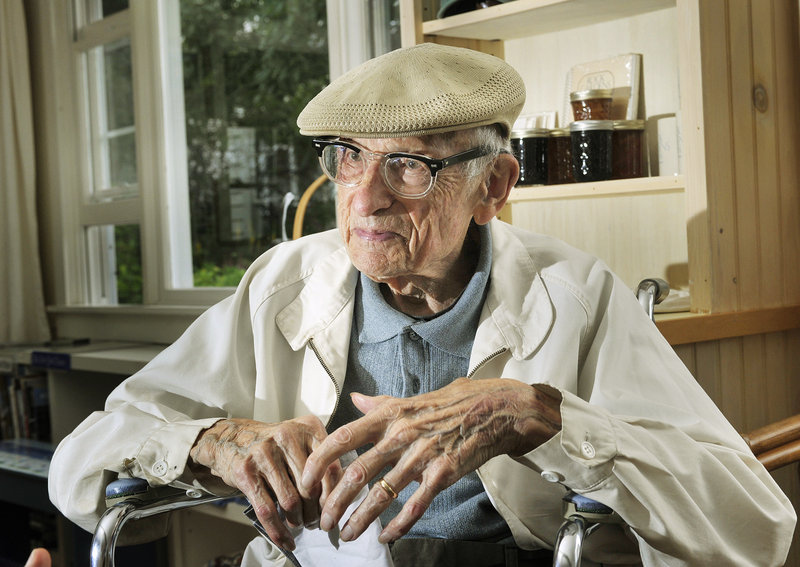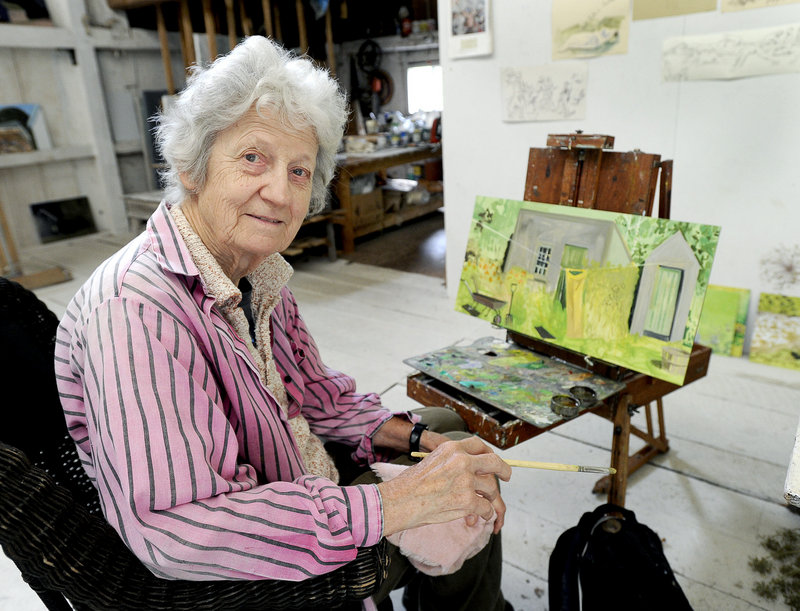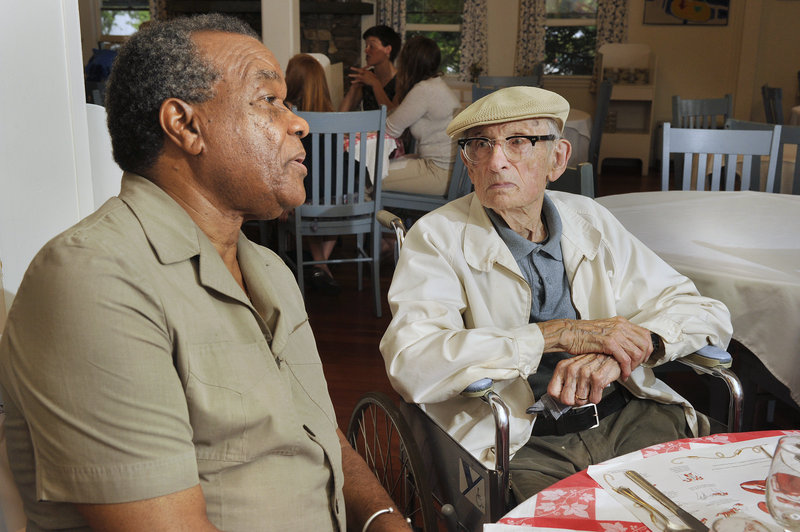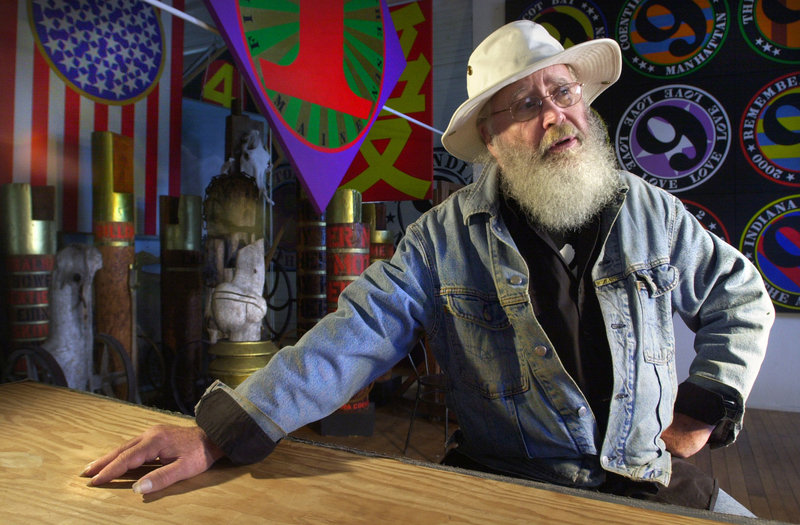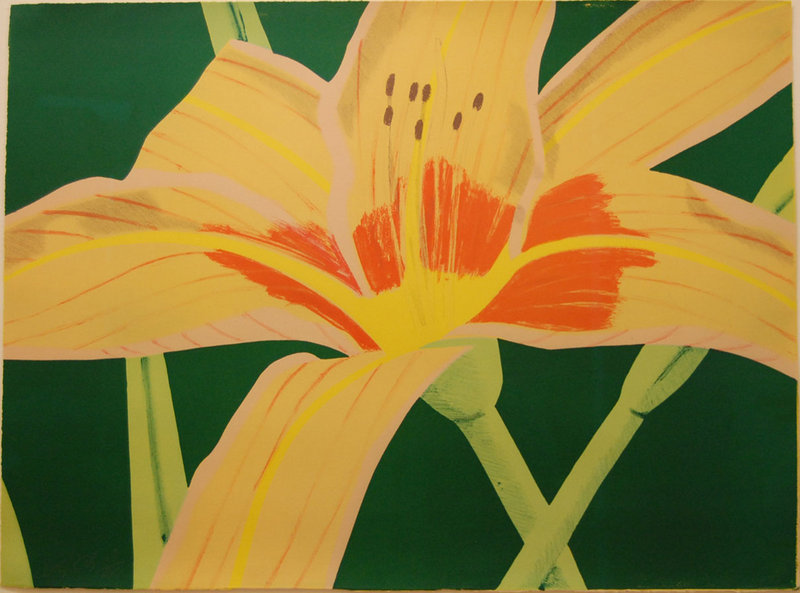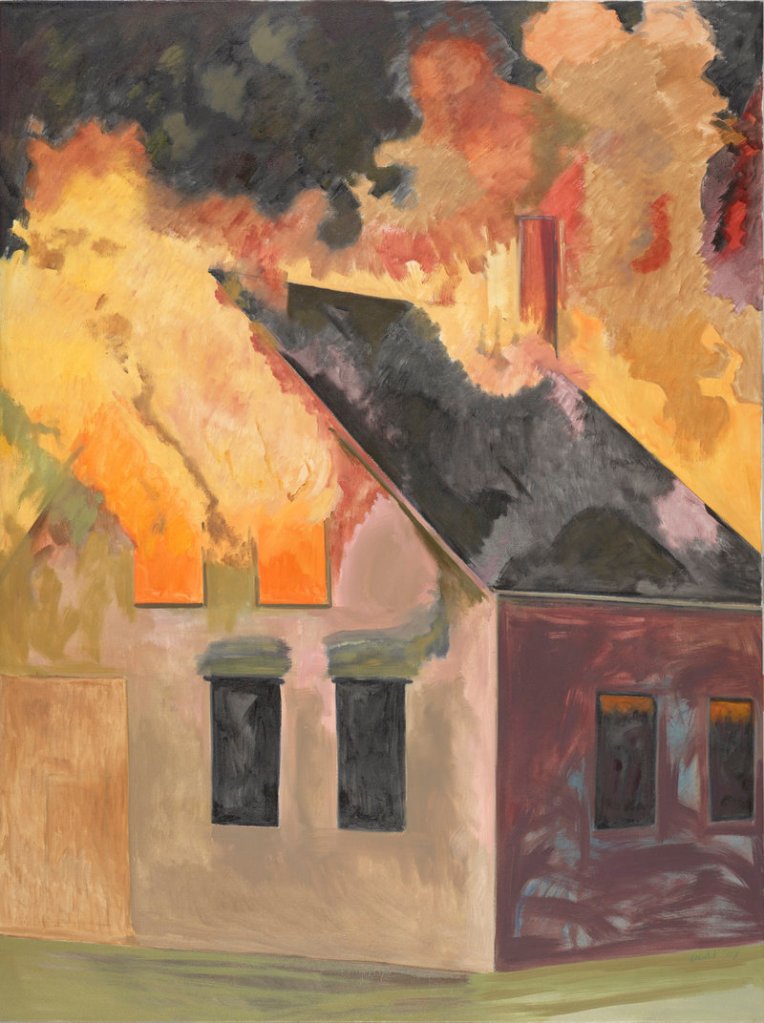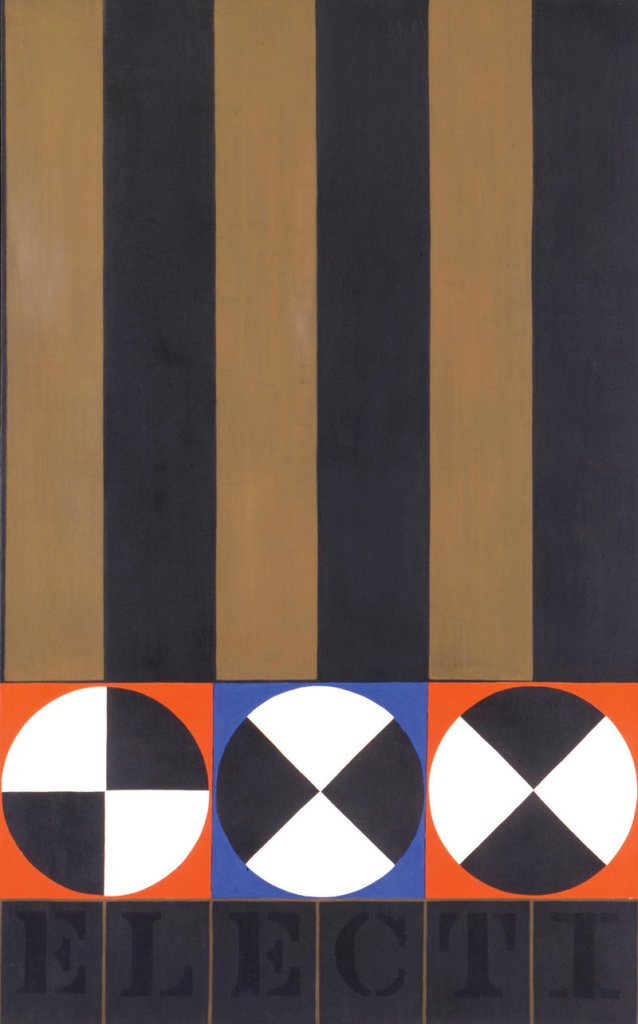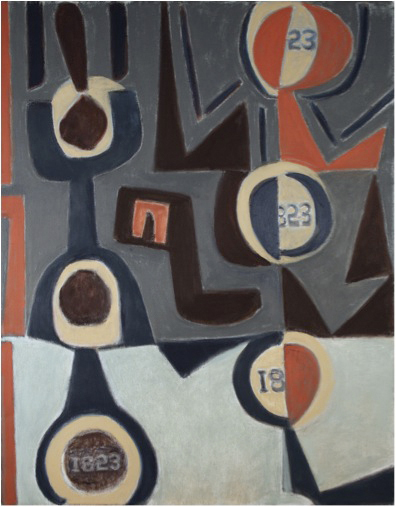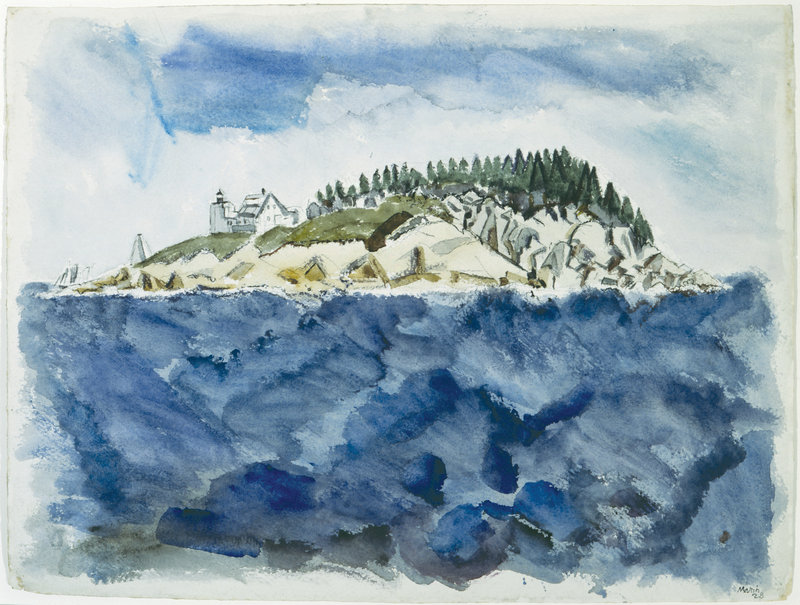When Will Barnet’s mother died, he lacked a proper way to grieve. He was not a particularly religious man, so finding solace in a church was not an option.
Instead, Barnet wandered over to the Museum of Fine Arts in Boston, sat alone in the galleries and immersed himself in the glistening oils of the Old Masters, particularly Rembrandt’s paintings of women.
Quietly alone, Barnet found the comfort he desperately sought, and began processing his grief.
“I spent the entire day at the museum,” the artist recalled in an interview at his summer home at Phippsburg. “I thought to myself, ‘How wonderful it is that 400 years later, Rembrandt’s work is still here. I should be so lucky to have such a lasting legacy.’ “
Barnet, who is now 101 and a recipient of the National Medal of Arts by President Obama, has begun articulating a plan to ensure his own legacy. With input from his wife and family, and consultations with lawyers and accountants, the artist has formed a foundation that will govern the paintings, drawings, prints and other materials most important to him.
He has also identified “roughly a couple dozen” key paintings that he hopes will “go to good museums and good collections to survive over the decades.”
Barnet is among a large group of aging artists with ties to Maine who are working through the difficult, complicated and often emotional process of coming to terms with their own mortality while making decisions about the survival and dissemination of their work after their deaths.
Maine is home to dozens of influential American artists with important international, national and regional stature, from Beverly Hallam in York to Robert Indiana on Vinalhaven to Richard Estes in Northeast Harbor — and dozens more along the coast, up north and in the hills of western Maine.
Because of Maine’s lure as an inspirational place for creating art, as well as a progressive law that makes it favorable to donate work to state museums in lieu of paying inheritance taxes, many artists come here to work in their prime, and some live out the balance of their lives in the state.
The decisions they make about their work, their estates and their legacies will have a large impact on the quality and depth of the collections of Maine museums for generations to come, as well as artist-in-residence opportunities for young and emerging artists.
In essence, the future of their estates is intertwined with Maine’s future as an artistic and cultural destination.
MAINE LEGACIES EXPAND, EVOLVE
Many artists in their 70s, 80s and 90s — or in Barnet’s case, as centenarians — face wrenching decisions about where to leave their work, how their homes may be used and how they want to be remembered.
Several important Barnet images already are in the collections of Maine museums, including the silksceen print “Persephone” from 1982 at the Portland Museum of Art. Whether more of his work ends up in Maine remains to be seen. The family has not disclosed details of his wishes, which are evolving.
Examples abound of artists whose Maine legacies have expanded after their deaths. The painter Stephen Pace worked out an arrangement with Maine College of Art to use his home and studio in Stonington as a residency program, and created a gallery in his name with a large collection of work at Fryeburg Academy.
When painter Robert LaHotan died in 2002, he left the property on Great Cranberry Island that he shared with his partner and painter John Heliker. The Heliker-LaHotan Foundation has operated a residency program for seven seasons, providing retreats for 20 visual artists, poets and musicians.
The Portland Museum of Art Biennial, which serves as a survey of contemporary art in Maine, is funded by a gift from artist William Thon, who died in 2000 and left the museum almost $4 million. At the time, it was believed to be the largest bequest of an artist to an American art museum. The estate also donated art to schools throughout Maine.
Especially in the summer, when many artists arrive at their seasonal homes to do their work, museum directors and curators come calling — essentially to pay their respects and conduct studio visits to see new work, and also to talk discreetly to artists about their estate plans.
It’s not about lobbying or angling for work, said Colby College Museum of Art director Sharon Corwin, but about building relationships and helping artists establish a long-term plan and vision.
“I feel it’s about an opportunity of shared vision,” said Corwin, who inherited generations of goodwill established by Colby museum patriarch Hugh Gourley, who died in Portland on Wednesday. “I think it’s about illuminating the opportunity to take a vision and find a way for it to be expressed.”
Gourley built Colby’s collection on the strength of his relationships with artists like Alex Katz and the heirs of Maine modernist John Marin.
Colby has more than 700 Katz pieces in its collection, as well a museum wing dedicated to his work funded by Colby benefactor Paul J. Schupf. Katz forged his relationship with Colby in the 1950s, in the decade after he began coming to Maine to attend the Skowhegan School of Painting and Sculpture. The Katz wing opened in 1996.
More recently, Katz expanded his relationship with Colby, as well as several other Maine museums, with regular gifts of paintings and other works of art by contemporary artists through his own foundation. Four years ago, for example, the Katz Foundation gave Colby a half-dozen Marsden Hartley paintings. “Those are transformational gifts,” Corwin said.
In 1973, the late John Marin Jr. and his wife, Norma, gave Colby a trove of oils and watercolors by John Marin Sr., one of Maine’s most important painters of the 20th century. With the gift, Colby became the second-largest repository of Marin paintings, after the National Gallery of Art in Washington, D.C.
Norma Marin, who lives in Portland’s West End much of the year, remains engaged with Colby, as well as other museums. A collector herself, she has promised Colby a collection of more than 150 modernist photographs, Corwin said.
MUSEUM-ARTIST RELATIONSHIPS
In Maine, the character of our museums is tied to relationships with individual artists.
The Farnsworth Museum in Rockland is closely associated with the Wyeth family, which has made many gifts and pledged more for the future.
The Portland Museum of Art is deeply tied to the legacy of Winslow Homer, whose heirs sold his painting studio at Prouts Neck in Scarborough to the museum in 2006. The museum raised $10.5 million to preserve and restore the studio, and will open it to the public in September.
The Portland-Homer relationship dates to 1893, when Homer exhibited at the museum as a living artist. In 1976, philanthropist Charles Shipman Payson gave the museum a collection of 17 Homer paintings.
The studio purchase and restoration enables the museum to tell the complete Homer story while framing it in the context of the larger story of art in Maine, said museum director Mark Bessire.
The biggest unanswered question involving a living Maine artist revolves around Indiana of Vinalhaven. Indiana, best known for his LOVE sculpture and bold iconic images, will turn 84 in September. He lives in the Star of Hope Oddfellows Lodge on Vinalhaven, off the coast of Rockland.
The Star of Hope has been Indiana’s home since 1978, and serves as a repository of his late-career output. When Indiana turned 80, several museum directors showed up at Vinalhaven for a surprise birthday party. The artist held court, politely accepting their good wishes without revealing his plans.
The fate of the home and the work in it “is the biggest one we are all waiting for,” one museum director said privately.
Indiana declined repeated interview requests for this story. In the museum world, it is widely assumed that the Farnsworth has a deal worked out with him and will govern the Star of Hope in some capacity after his death.
But Farnsworth director Christopher Brownawell said there’s no deal in place.
“I would describe ours as a close relationship with Bob. But as far as his estate plans, that is Bob’s area of focus,” he said. “We are not involved in the details of that at this point, other than we do go out there and have discussions with Bob about his art. We are just maintaining a relationship and open conversation with him — and a lot of other artists. But as far as the museum being involved in his estate plans, that falls to Bob.
“Bob is his own man. We do not get into the weeds with him on some of those discussions.”
DONATIONS IN LIEU OF ESTATE TAXES
An example of a Maine artist whose death created complications was Bernard “Blackie” Langlais, a Cushing artist who made large wooden sculptures of animals. He died in 1977 at age 55, leaving his estate and legacy in the hands of his widow, Helen, who died in 2010.
Langlais was remarkably prolific, and left hundreds of wooden pieces in his barn and around his yard at Cushing. The way the laws were written at the time of her husband’s death, Helen Langlais was subject to estate taxes because she inherited a large and valuable body of work.
She lobbied the state Legislature, and within three years helped enact a tax law that allowed artists and their heirs to donate work to museums in lieu of taxes. At the time the law was passed, Maine was among only a handful of states permitting such exemptions.
It was inspired by examples in the United Kingdom and France, where cultural property can be accepted by the national government in lieu of cash payment of estate tax or inheritance tax “if affirmed as pertinent to the national cultural patrimony by an acceptance committee,” according to a new report on artist-endowed foundations by the Aspen Institute.
The impact of the Maine law is murky, said Christine J. Vincent, study director. Vincent, former president at Maine College of Art, will lead a public discussion of artist-endowed foundations on Aug. 6 at the Farnsworth.
“In general, implementation appears to have been fairly limited, either by states’ actual willingness to accept artworks and forgo cash revenues, (and) by legislative limits on the total value of artworks that can be accepted in any one year,” according to the report.
Vincent said in an email, “The statute’s qualifying conditions place limits on the practical application of the concept that fundamentally diminish its relevance.”
Helen Langlais arranged for many key pieces to be donated to university campuses across the state, as well to the Ogunquit Museum of American Art. She retained hundreds more on the Cushing property, and worked out a plan with Colby to acquire some of them.
Corwin would not discuss the details of Colby’s arrangement with the Langlais estate, other than to say that Colby plans a major show in 2014 involving 200 pieces of Langlais’ work. An announcement about the rest of the estate, including the Cushing property, may come in the months ahead, she said.
With the gift of art also comes an obligation. In the case of Langlais’ work, much of it has deteriorated because of exposure to the elements. The preservation of wooden sculpture designed for open-air display in all seasons requires an influx of cash.
Andres Verzosa, a Portland gallerist who has worked on behalf of the Langlais estate, has helped raise $30,000 to preserve several of the artist’s sculptures on public campuses as well as at the Ogunquit museum. It’s a small amount of money, but it’s a start, he said.
“There are a lot of issues with his work,” Verzosa said. “It’s wood. It’s big. It costs money. You have to have money to take care of things. This gets the process going.”
RELYING HEAVILY ON GIFTS
Because of budget constraints, most Maine museums do not have the resources to purchase major pieces of work or accommodate many of Maine’s major artists and their studios — let alone the hundreds of midlevel or minor artists whose work adds context and layers to the state’s art legacy, Corwin said.
As is the case with many museums today, Colby relies heavily on gifts from donors and artists themselves, like Katz, to build the collection.
“I feel a sense of responsibility to the collectors we have and to the artists in our collection,” she said.
To that point, Corwin noted that Colby recently received 60 works on paper by Maine painter Lois Dodd, also of Cushing. The museum already has several Dodd paintings in its collection, and the 60 works on paper “expands our depth of holdings,” she said.
For Dodd, any discussion about what happens to her work after her death “is kind of a pain in the neck — a big fat pain in the neck — because there is not a real good solution, it seems. You unload it on your kids, and then they have the problem.”
Dodd remains active, painting most days at her studio. In a perfect world, her dealer would sell all of her work before her death, leaving a clean slate.
But that is not likely to happen. She has no desire to stop painting, and remains prolific.
“What else can you do?” she asked.
Barnet said the same thing. At 101, he paints an hour or two most days. “It’s like life itself. To be a painter and not paint is impossible. Painting is an inspiration,” he said.
Oftentimes, the shape of an artist’s legacy falls to a spouse or offspring. Ona Barnet, Will Barnet’s daughter who lives in Phippsburg, said she and her siblings have had many conversations with their father and mother, Elena, about his wishes. The family only recently formed a foundation to fulfill his wishes after his death.
But it’s an evolving conversation. “We have had regular meetings to talk about the future,” Ona Barnet said. “It’s all based on my father’s wishes about what happens to his work. My dad loves to talk about his work and what’s going to happen, but it’s a work in progress.”
And there is no guarantee her father’s wishes will be fulfilled.
“You can’t really control the final outcome,” Ona Barnet said. “It would be great to say, ‘I want this piece to go to the Met, this piece to go to Guggenheim and this piece to go to the Boston museum.’ But you can’t do that. You can’t control it.”
No one understands that sentiment better than Norma Marin, John Marin’s daughter-in-law.
With the help of a team of advisers, she has governed the Marin estate since her husband’s death in 1988. She feels the weight of that responsibility every day.
“It is really overwhelming at times, having to make the big decisions,” she said. “I didn’t think about it as a young woman. But I think about it all the time now. I am in charge of his legacy.”
Since she married Marin’s only son, John Jr., Norma Marin has been keenly in tune with the family’s wishes to place the artist’s work in the best possible museums and collections — in Maine and elsewhere. That has been her guiding principle and the sole motivation for any gift or sale.
“I’ve always gone by this premise: If it’s right for Marin and if it’s good for Marin, then it’s good for everybody.”
Staff Writer Bob Keyes can be contacted at 791-6457 or:
bkeyes@pressherald.com
Twitter: pphbkeyes
Send questions/comments to the editors.


